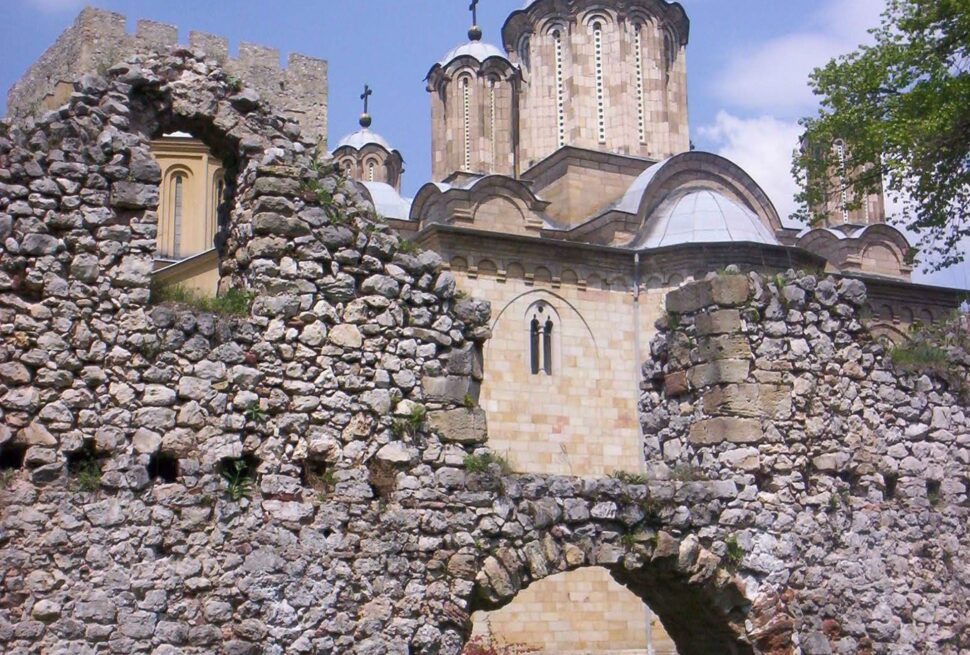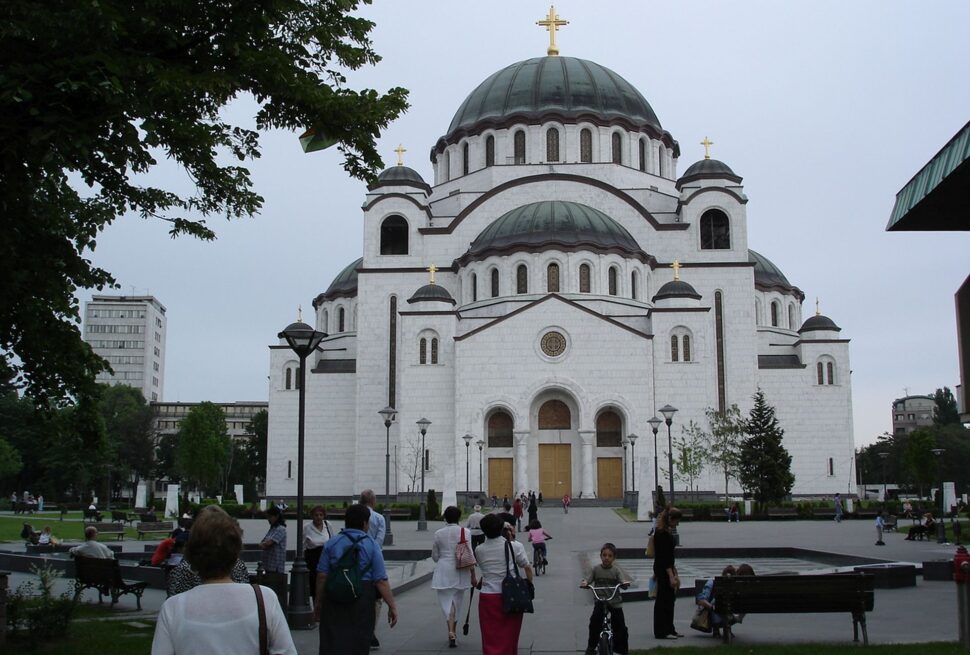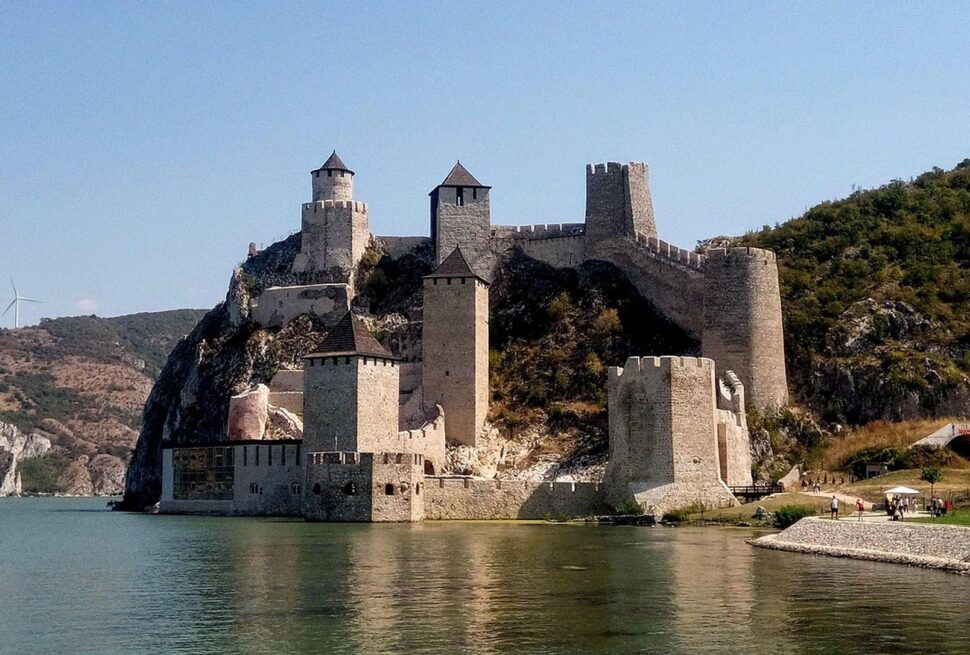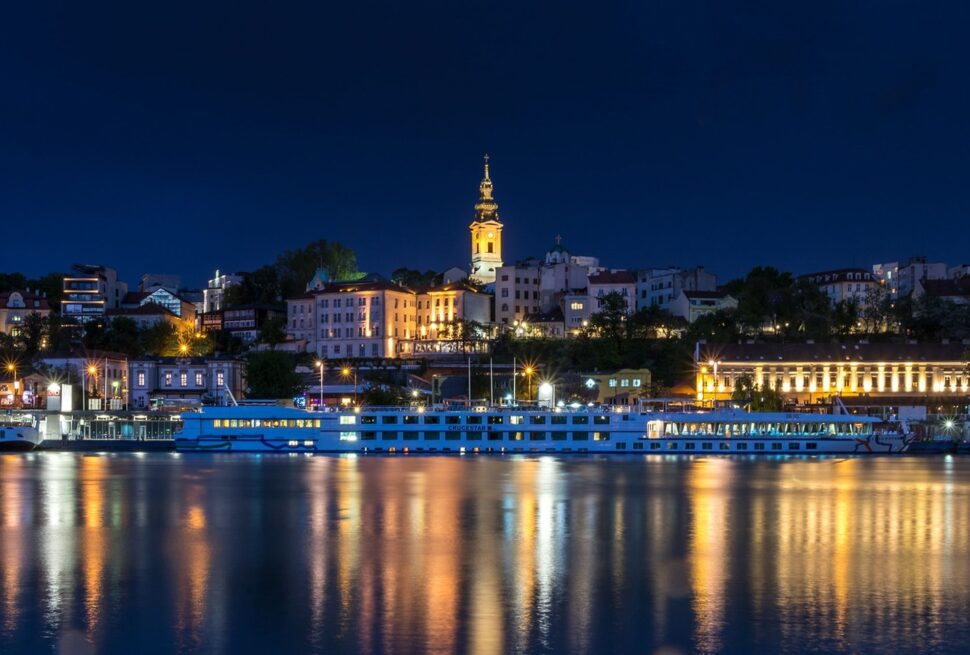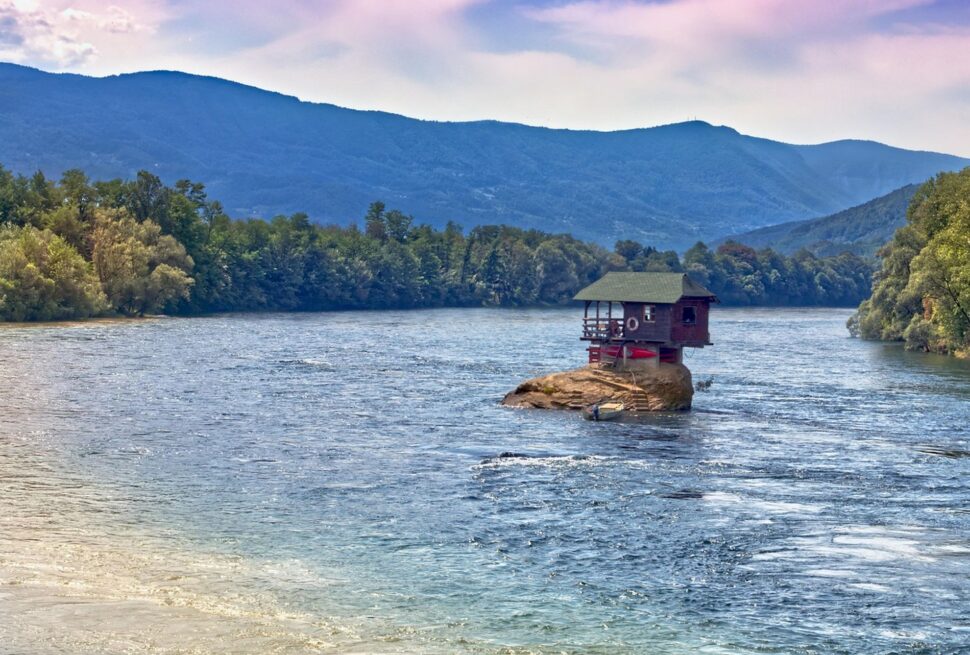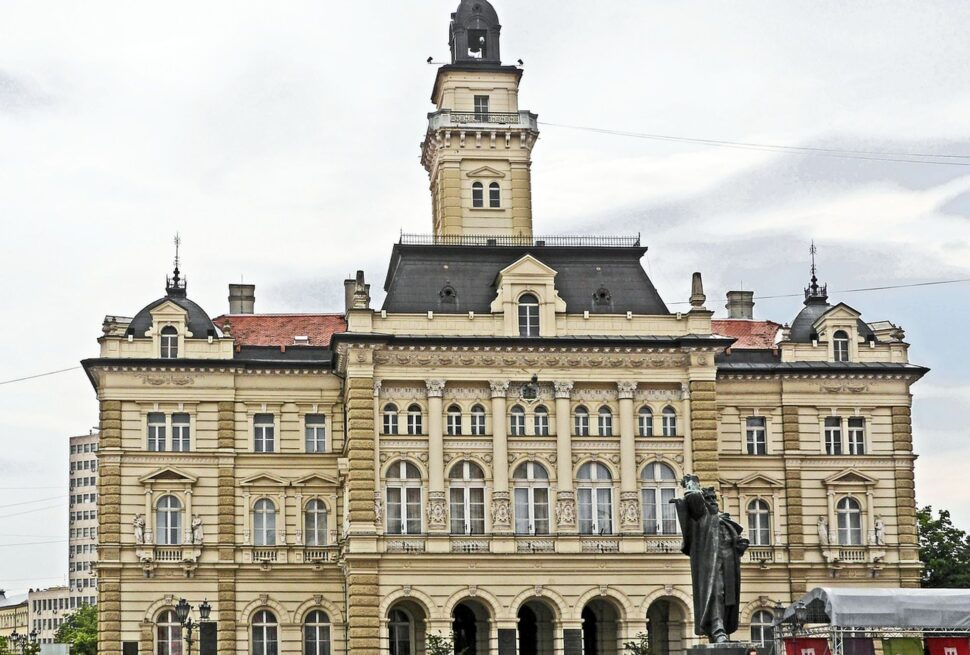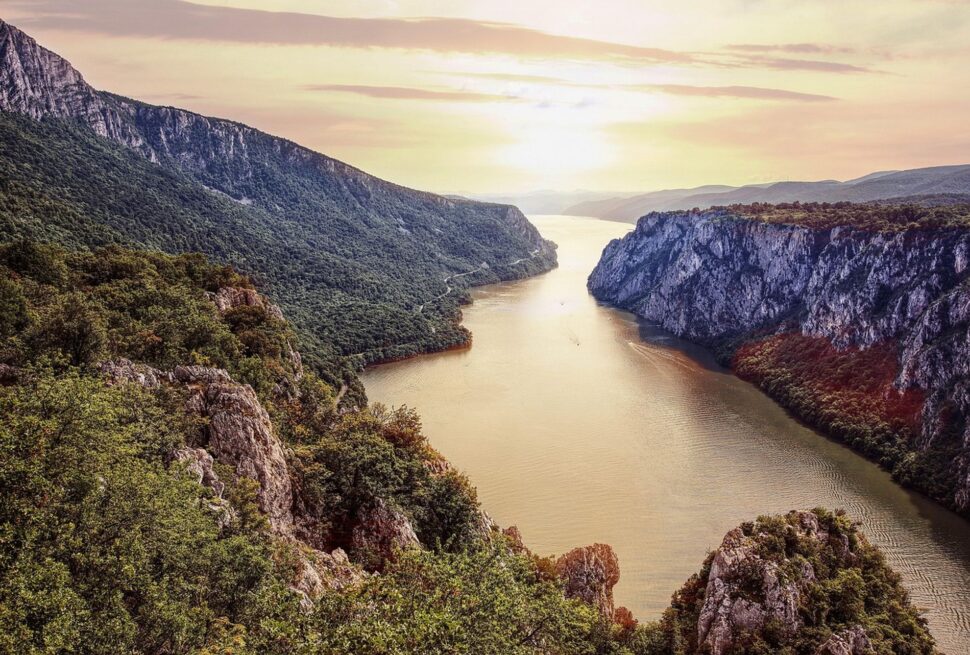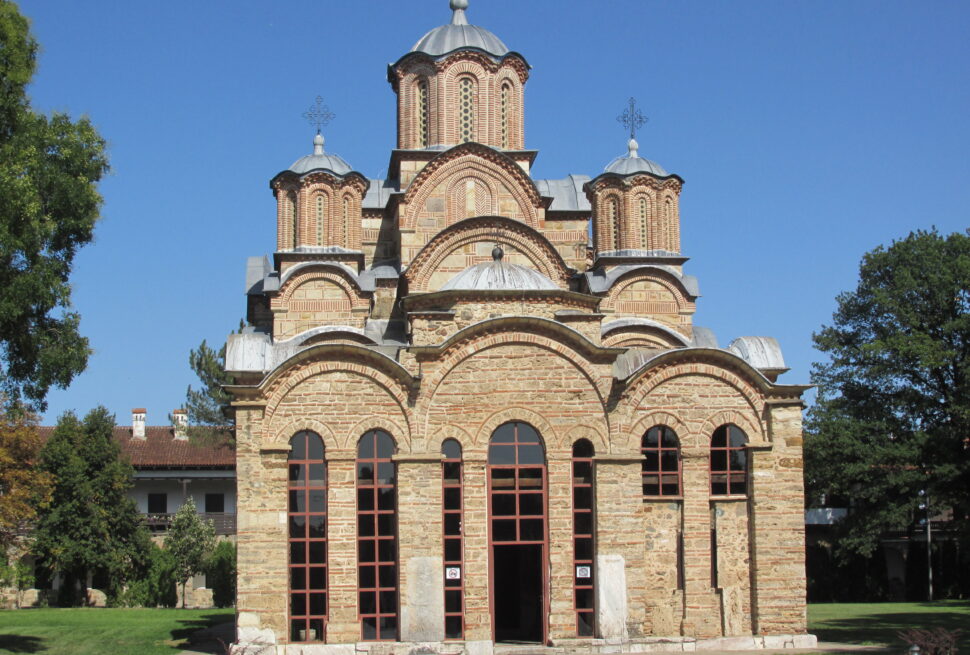About Serbia
If you plan to explore Serbia and want to discover its hidden gems with an expert guide, here’s all the information you need for an unforgettable tour!
Tourist Guide Services
👨🏫Licensed Guide / Art Historian
🔹 Languages: Serbian and English
🔹 Types of Tours:
· Group tours or individual tours
· One-day trips or multi-day adventures
What can you visit?
· Belgrade – The capital with a rich history and vibrant nightlife.
· Novi Sad – Serbian Athens with the EXIT festival and Petrovaradin Fortress.
· Niš – The city of Emperor Constantine the Great and the infamous Ćele Tower.
· Subotica – A city with beautiful Art Nouveau architecture and Lake Palić.
· Studenica – A UNESCO World Heritage site, famous for its frescoes.
· Žiča, Sopoćani, Mileševa – Sacred sites with rich spiritual and cultural heritage
· Viminacium – A Roman military camp and city with fascinating remains.
· Lepenski Vir – The oldest settlement in Europe, along the Danube River.
· Felix Romuliana – An imperial complex from the Roman Empire period
· Transport to any destination in Serbia – airport transfers, intercity transport
· Plan a tour based on your own interests – wine, nature, culture, or adventure!
🚗 Guide as a Driver – Enjoy sightseeing while the guide drives the vehicle.
🚖Assistance with Vehicle Rentals:
· Taxis
· Rent-a-car
· Buses for larger groups
💵 By agreement – Prices depend on the tour duration, number of people, and specific requirements.
Whether you want to explore historical monuments, discover natural beauty, or indulge in local gastronomy, the guide will provide you with an authentic and personalized experience!
Are you interested in a specific destination or type of tour? 😊
Serbia – Must-Visit Places
If you’re planning a trip to Serbia or just curious about what the country has to offer, here’s a list of must-visit destinations that showcase its rich history, natural beauty, and vibrant culture:
1. Belgrade – The capital city, known for its dynamic nightlife, historic Kalemegdan Fortress, and the confluence of the Sava and Danube rivers. Don’t miss Skadarlija, the bohemian quarter full of traditional restaurants and art.
2. Novi Sad – Often called the “Serbian Athens,” this cultural hub is famous for the EXIT Festival held at the iconic Petrovaradin Fortress. The city’s charming streets, Dunavski Park, and proximity to Fruška Gora National Park make it a must-see.
3. Niš – One of the oldest cities in Europe, known as the birthplace of Emperor Constantine the Great. Visit the eerie Skull Tower (Ćele Kula), the Niš Fortress, and explore the nearby Niška Banja spa.
4. Kopaonik National Park – Serbia’s premier ski resort and “Sunny Mountain,” offering skiing in winter and hiking in summer. The park’s natural beauty and biodiversity make it a year-round destination.
5. Tara National Park – A haven for nature lovers, with dense forests, the Drina River Canyon, and the rare Pančić’s spruce. Don’t miss the picturesque Šargan Eight Railway and Drvengrad, the ethno-village built by filmmaker Emir Kusturica.
6. Drvengrad & Mokra Gora – An open-air museum and traditional village offering a glimpse into Serbian rural life, surrounded by breathtaking mountain scenery.
7. Studenica Monastery – A UNESCO World Heritage Site, this 12th-century monastery is one of the most important in Serbia, famous for its white marble architecture and stunning frescoes.
8. Smederevo – Home to the largest lowland fortress in Europe, Smederevo Fortress, and a region rich in winemaking traditions dating back to Roman times.
9. Zlatibor – A mountain region popular for its fresh air, healing climate, and traditional open-air markets. It’s perfect for families, with plenty of outdoor activities.
10. Uvac Special Nature Reserve – Known for its meandering river, stunning canyons, and being the home of the rare griffon vulture. A boat tour through the Uvac River is an unforgettable experience.
11. Vrnjačka Banja – Serbia’s most famous spa town, known for its thermal springs and relaxing atmosphere.
12. Đavolja Varoš (Devil’s Town) – A unique geological phenomenon featuring over 200 earth pyramids and pillars, surrounded by local legends.
13. Viminacium – An ancient Roman archaeological site near Smederevo, featuring well-preserved ruins of a military camp, amphitheater, and Roman baths.
14. Golubac Fortress – A medieval fortress dramatically perched on the banks of the Danube River at the entrance of the Iron Gates gorge.
15. Subotica & Palić Lake – Subotica is known for its beautiful Art Nouveau architecture, while nearby Palić Lake is a serene spot for relaxation.
Serbia’s blend of historical sites, stunning nature, and warm hospitality makes it a destination worth exploring. Whether you’re into history, adventure, or just good food and wine, there’s something here for everyone! 🌍✨
CULTURAL HERITAGE OF SERBIA – Monasteries and Churches
Medieval monasteries, monuments of medieval Serbian sacral architecture, were built from the beginning of the 9th to the late 17th century. During this long period, several hundred sacral buildings (churches and monasteries) were constructed in the territory that is now Serbia. A large portion of these structures, either in their original or modified form, has been preserved to this day, representing a vast ecclesiastical and cultural treasure.
Monasteries and churches were built during the Middle Ages in different periods and styles, depending on the influences of specific eras on overall artistic creation (influences from the West, Byzantium, Mount Athos, etc.).
Based on chronological and stylistic differences, Serbian medieval sacral architecture is divided into five periods, styles, or schools:
- Pre-Nemanjić Period (from the beginning of the 9th to the mid-12th century), which includes monuments in Old Zeta, Zahumlje, and the Littoral.
- Nemanjić – Raška Period (from the second half of the 12th century, with the rise of Stefan Nemanja to the historical scene, until the end of the 13th century), which includes monuments built in the territory of the Nemanjić state of Raška, also known as the Raška School.
- Milutin’s Era – Serbian-Byzantine Style Group or School (from the late 13th to mid-14th century), geographically the most widespread due to the significant expansion of the Serbian state during this period.
- Morava School, Morava Style Group (from the second half of the 14th century to the mid-15th century), includes monuments built immediately before and after the Battle of Kosovo, mainly in the Morava basin – Great, West, and South Morava.
- Period of Turkish Rule (from the mid-15th century, after the fall of the medieval Serbian state, until the end of the 17th century), which is divided in Serbian art history into three periods:
- From the fall of Smederevo in 1459 to the restoration of the Peć Patriarchate in 1557,
- From 1557 to the early 17th century,
- From the time of Patriarch Pajsije (1614–1647) to the Great Migration in 1690.
Additionally, a significant part of the mentioned cultural and historical heritage was built in areas that were part of medieval Serbia but are now within the borders of other countries – Croatia, Montenegro, Albania, North Macedonia, Greece, Bosnia and Herzegovina, and Romania.
The City of Niš is located in southern Serbia and is the third largest city after Belgrade and Novi Sad. It serves as the administrative center of the Nišava District. The Nišava River flows through the city and joins the South Morava River not far from there.
Modern Niš is built on the ruins of the ancient Roman city of Naissus, which was one of the key administrative cities along the Balkan main route Via Militaris.
During the Middle Ages, thanks largely to its geographical position at the crossroads of highly important routes, Niš was one of the centers of the Serbian state. In 1189, Grand Župan Stefan Nemanja met with the German Emperor Frederick Barbarossa, the leader of the crusaders in the Third Crusade.
During the Ottoman period, Niš served as one of the military and civil administrative centers of the Ottoman Empire in the Balkans. From the first half of the 16th century, the Bali Bey Mosque, located within the walls of today’s Niš Fortress, remains as one of the few preserved examples of Islamic architecture of this kind.
The fortress itself, situated on the right bank of the Nišava River, was built by the Turks in the early 18th century on the foundations of earlier Roman and Byzantine fortifications.
Not far from the city, on Čegar Hill, a major battle took place in 1809 between Serbian insurgents led by Stevan Sinđelić and a larger Turkish army. After the battle, the Turks constructed the gruesome and infamous Ćele Kula (Skull Tower) from the skulls of Serbian warriors. Today, it stands as one of the symbols of Niš, as well as a symbol of heroism and the heavy price paid for the freedom of the entire Serbian state.
After the final liberation from Ottoman rule in 1878, the late 19th and early 20th centuries saw the creation of the main works of Serbian urban architecture.
Today, Niš is the economic, industrial, commercial, administrative, university, and cultural center of the Nišava District and the entire southeastern Serbia. It remains in a geographically and strategically important position, at the crossroads of major routes leading through Thessaloniki to Athens and via Sofia and Istanbul to the Middle East.
Not far from the city center is the Constantine the Great International Airport.
The remains of the rich cultural past can be seen both in the city itself and in its immediate surroundings. Numerous tourist attractions are definitely worth visiting, including the Mediana archaeological site and the most famous excursion spot – Niška Banja, located just 10 km from the center of Niš.
Niš is also the birthplace of Emperor Constantine I the Great in the 3rd century, a historical fact of which the city’s residents are extremely proud. Thanks to this, in 2013, Niš hosted the central Christian church celebration marking 1700 years since the Edict of Milan issued by Emperor Constantine.
Novi Sad is the second largest city in Serbia, after Belgrade. It is located in the northern Serbian province of Vojvodina and serves as its capital and administrative center.
Founded at the end of the 17th century, Novi Sad today spans both the left and right banks of the Danube River, situated right at the border between Srem and Bačka, and partially on the northern slopes of the Fruška Gora mountain.
In the past, before the city was established, the only settlement with a long history was located on the right bank of the Danube; despite now being part of Novi Sad, it has preserved its old name – Petrovaradin. At the very edge of this settlement, rising above the Danube’s bank, stands the Petrovaradin Fortress, known as the “Gibraltar of the Habsburgs,” an exceptional historical attraction and one of the symbols of Novi Sad.
On the opposite side of the river, across the Danube, a new urban center began to rapidly develop on the Bačka plain in the mid-18th century after being proclaimed a Free Royal City by the edict of Maria Theresa. Unfortunately, almost the entire city was destroyed during bombings in the mid-19th century, but the entire infrastructure was quickly and completely restored.
Not long after its founding, Novi Sad began to emerge as the center of cultural, political, and social life for Serbs, whose state at that time was part of the Ottoman Empire. It reached its peak in the 19th century, earning its famous nickname, the “Serbian Athens.”
Novi Sad is also known as a multicultural environment, home to over 20 nationalities, fostering its history, traditions, and unique characteristics while continuing its development as a city of the future—with refined nuances of the beauty found in diverse identities.
The architecture of Novi Sad radiates a true Central European spirit. Most of the older buildings and urban areas were constructed during the Austro-Hungarian period. The city center stands out for its beauty, featuring a pedestrian zone along J.J. Zmaj and Dunavska streets, and a beautiful city square at its heart, where Meštrović’s statue of Svetozar Miletić rises proudly. Surrounding the square are landmarks like the City Hall, the Cathedral, the Orthodox Saborna Church, the Serbian National Theatre, and more. At the very end of the pedestrian zone lies the charming Danube Park, an oasis of peace and greenery in the very heart of Novi Sad.
Novi Sad’s favorable geographical location has made it an important crossroads of trade routes—not only through land transportation but also via the Danube River and the Danube-Tisa-Danube Canal. All of this has contributed to the city’s industrial, economic, cultural, and tourism development. The city’s interesting and rich history is enriched by the beautiful natural surroundings of the great river, embraced by the green freshness of Fruška Gora, a national park with unique natural and historical attractions located just 20 km from the center of Novi Sad.
Every year since 2000, at the beginning of July, the EXIT music festival is held at Petrovaradin Fortress, placing Novi Sad on the map of Europe’s top summer festival cities.
Kopaonik is the largest and most well-known ski resort in Serbia, and also one of the largest mountain ranges in the country. The highest peak of Kopaonik, Pančić’s Peak, stands at 2,017 meters above sea level.
The dynamic, and at times dramatic, terrain of this mountain is the reason why its numerous ski slopes are a favorite destination for winter sports enthusiasts—ranging from beginners to true adrenaline adventurers.
With its 200 sunny days a year, Kopaonik rightfully bears the nickname „The Sunny Mountain.“ Despite this, it has an average of 160 snowy days annually—from the end of November to May—which, combined with its abundant accommodation and entertainment facilities, makes it an exceptionally high-quality and attractive winter destination.
At around 1,700 meters above sea level lies a plateau covering nearly 120 square kilometers, which was declared a National Park in 1981.
The mountain’s incredible natural wealth, thermal springs, and significant cultural and historical landmarks located in close proximity to Kopaonik make it an extraordinarily interesting and popular destination throughout the entire year.
Smederevo is located on the right bank of the Danube, downstream from Belgrade, right at the border between the flat, expansive region of Banat to the north and central Serbia, whose hills gently slope toward the mighty and vast river from the south.
Smederevo is an ancient city with a very rich and long history that dates back to the ancient period. The most significant historical fact is that during the medieval period, this city was the capital of the Serbian state—the last one before Serbia ultimately fell under the rule of the Turkish Empire.
The Smederevo Fortress is the most representative historical monument in the city, bearing witness to the final decades of independent medieval Serbia. It is located at the confluence of the Jezava River and the Danube and represents the largest lowland fortress in Europe by area. Its powerful walls and towers protected the capital of Serbia at that time and later served as an important frontier stronghold against Hungary.
The central square of Smederevo, surrounded by the city’s most important buildings, is dominated by the Church of St. George, built in the mid-19th century. Not far from the city, on gentle, vineyard-covered slopes, lies the Obrenović Villa—the summer residence of this royal dynasty.
Smederevo and its surroundings represent one of the first areas in Europe where grapevines were planted. The Roman Emperor Aurelian Probus brought vine cuttings from Asia in the 3rd century. The fertile, rolling land, favorable climate, many sunny days, and proximity to the Danube as a large reflective surface create ideal conditions for cultivating numerous high-quality grape varieties, for which the entire region has been historically known. Agriculture, particularly fruit production, is also highly prominent.
In parallel with the development of agriculture, thanks to its strategic location and proximity to the largest European waterway, Smederevo has become a strong industrial city and an important trade hub for river transport. Since the early 20th century, it has been known as one of the centers of ferrous metallurgy.
The beauty of the natural surroundings, especially the Danube in this part of its course, the large island (ada) opposite the city, its rich historical heritage, the hospitality of its residents, and its proximity to the capital city make Smederevo an interesting tourist destination. Additional attractions include events, the most famous being Smederevo Autumn, as well as the close proximity to the important archaeological site of Viminacium.
The fact that the city is located on a major navigable route is a key factor in the development of nautical tourism, while the tradition of viticulture positions Smederevo as a perfect starting point for any wine tour.

